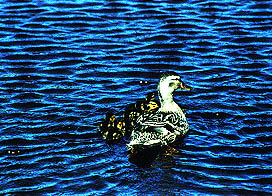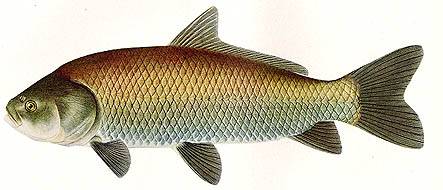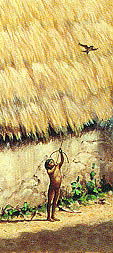
Female mallard and ducklings.
Later in the spring new plant growth would have offered relief from the monotonous diet of stored grain, much of which was likely becoming increasingly moldy and rodent infested. Moreover, spring growth provided needed source of fresh greens, sap, and tubers to the diet. Because of its early seed production, maygrass was especially important in the Mississippian spring diet. As spring progressed, more and more foods could be added to meals -- spring-spawning fish, migratory waterfowl drawn to the shallow lakes and wetlands were probably particularly welcomed additions.

